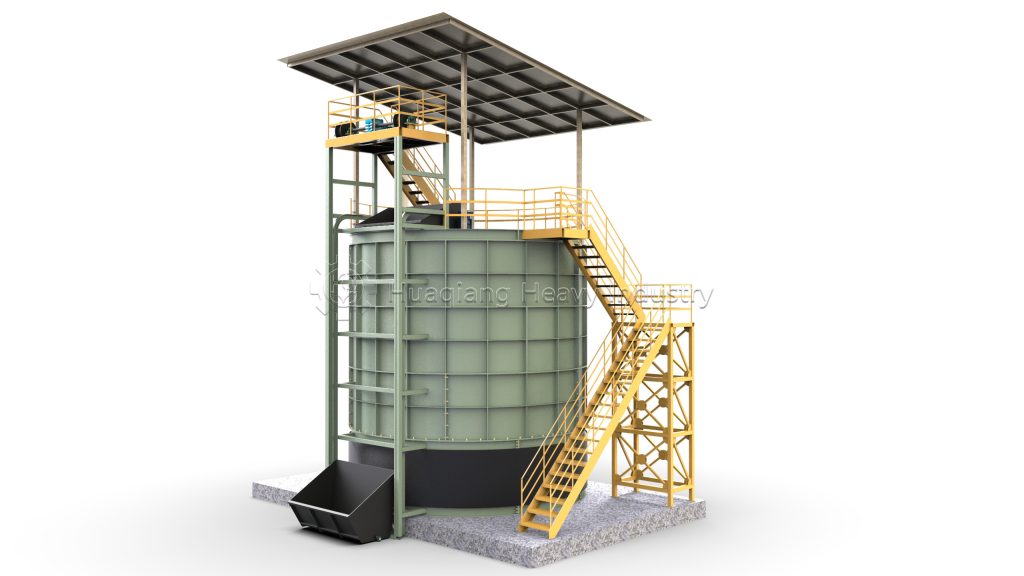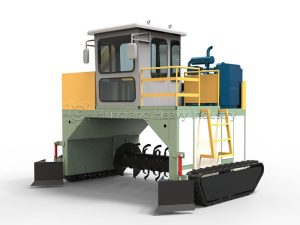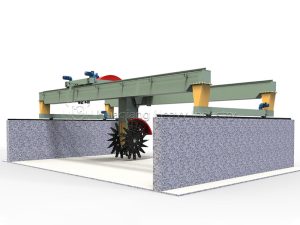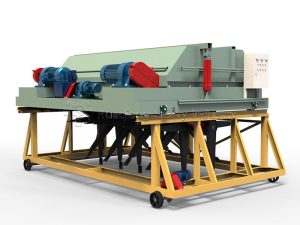In large-scale compost production, compost turners have become indispensable core equipment. Through mechanized operations, they solve the problems of low efficiency and high labor intensity in manual turning, significantly improving compost quality and production efficiency.

Main Functions of Compost Turners
Compost turners play multiple important roles in the fermentation process. First, they effectively supplement oxygen by breaking up the pile to allow air to fully penetrate the interior, preventing microorganisms from dying due to lack of oxygen while reducing the production of odors such as hydrogen sulfide and ammonia.
Secondly, compost turners have the function of temperature regulation. They turn high-temperature materials from the interior to the outer layer for heat dissipation, while moving low-temperature materials from the outer layer to the interior for heat absorption, ensuring the pile temperature remains within the ideal range of 50-75°C, which effectively sterilizes while preserving beneficial microorganisms.
Efficiency Comparison: Using compost turners can shorten the traditional manual composting cycle of 3 months to 1-1.5 months. A small compost turner can process 50-100 tons of material per day, equivalent to the workload of 20-30 people.
Main Equipment Types and Features

Crawler/windrow Compost Turner
Equipped with crawler walking system and spiral turning teeth, particularly suitable for open-air composting sites and large-scale pile processing. Its outstanding advantages include strong off-road capability, ability to work in muddy sites, and turning depth up to 1.2 meters. The disadvantages are slower movement speed and larger turning radius.

Wheeled Compost Turner
Features tire walking system and uses rake-type turning devices, suitable for small and medium-sized composting sites on hardened ground. This equipment moves quickly and offers flexible operation, but is prone to slipping on muddy ground and has relatively shallow turning depth.

Groove Type Compost Turner
Moves along fixed tracks within groove systems, specifically designed for indoor groove composting. It offers high automation, can be integrated with temperature control and ventilation systems, ensuring stable fermentation environment. The disadvantages include requiring fixed sites and higher initial equipment investment.
Operation and Maintenance Essentials
Pre-Operation Inspection and Startup Procedures
Before operating any compost fertilizer machine – whether a large wheel compost turner or chain compost turner – comprehensive equipment inspection is essential. This includes checking fuel, engine oil, and hydraulic oil levels, along with tire or track pressure conditions. After starting, the windrow machine should idle for 3-5 minutes to ensure turning teeth operate smoothly without jamming, which is crucial for maintaining equipment integrity throughout the organic fertilizer fermentation process.
Operational Parameters for Efficient Fermentation
During actual operation of the large wheel compost turning machine, turning tooth depth should be adjusted to approximately 80% of pile height. Maintain a consistent speed of 1-2 km/h along the windrow length to ensure materials are thoroughly mixed. Turning frequency must be synchronized with the organic fertilizer fermentation stages: every 3-5 days during high-temperature phase and every 7-10 days during cooling phase. This systematic approach significantly enhances the efficiency of the complete organic fertilizer production line and bio organic fertilizer production line.
Maintenance Integration with Production Systems
Regular maintenance ensures long-term stability of all equipments required for biofertilizer production. Clean residual materials from turning teeth after each use and regularly inspect for wear. This maintenance philosophy extends to other fertilizer making machine components, including the rotary drum granulator, drum organic fertilizer dryer, and double roller press granulator used in NPK fertilizer production process. Proper care across the entire fertilizer production machine ecosystem – from disc granulation production line to drum granulation systems – maximizes equipment lifespan and production efficiency for sustainable agricultural development.


